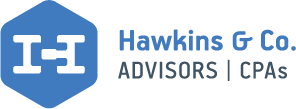The New Normal – filling in the gaps
(UPDATES as of April 14th, 2020 in red)
So…. As always, we hope everybody remains healthy. This was the week for us when things start to hit home. At H&Co, this was the week we first learned that COVID 19 has struck people we know personally.
We’re also slowly adjusting to the new home-based lifestyle…. and realizing it could last some time. And going through many small thoughts that follow from that as well – from canceling travel, to dealing with lack of haircuts….. I’m sure you’re all living the same journey.
This is also the week when the Canadian and provincial governments started to fill in many of the gaps that were acknowledged in the first roll-out of the support packages.
There were no huge changes and no show-stoppers, but enough changes and updates to keep us all alert. In this blog post, we try to call out those changes, to make sure you’re up to speed.
Please read, especially if we chatted with you in the last week – some of these changes update those conversations.
Wage Subsidies (75%)
The two interlocking programmes remain in place:
- Temporary Wage Subsidy (10% rebated to employers via a reduction in remittances sent; total cap $25k per entity). This is in law, and nothing new about this one this week
- Canada Emergency Wage Subsidy (75%, refunded to employers in a few weeks, need to suffer 30% revenue hit to be eligible)
The CEWS is not yet in law… but we learned more this week – mainly about eligibility:
- It’s now clear that the vast majority of Canadian employers (charitable and business, but not the public sector) are potentially eligible for the CEWS – regardless of business structure.
- As the crisis “started” in mid-March, the threshold in March is a 15% drop (ie. half of 30%). It remains 30% for future months.
- The government issued guidance on how you calculate your revenue for this purpose. You can either calculate it based on billings, or on cash. You don’t count revenue from related companies in this calculation. Pick a method and stick with it.
- Clarity for businesses who didn’t have revenue this time last year, or for whom it’s not a valid comparator – refer to January and February 2020. Again, pick a comparator and stick to it.
Other things we learned:
- For employees not on a fixed salary, you calculate the “baseline” wage from the average weekly amount paid between January 1 and March 15, 2020 (but take out any 7-day period not paid). The government will pay 75% of that amount.
- The subsidy also covers the employer’s share of EI and CPP contributions, subject to the weekly cap of $847 a week.
- Non-arm’s length employees (mainly meaning owners or their relations) must have been on payroll before March 15, 2020 – so this prevents business owners from adding other family members, or switching to salary from dividends to take advantage of the subsidy.
- Application will be online: either through a new web-based application (not yet launched), or through CRA’s existing “My Business Account”. As always, you’re encouraged to sign up for and use the existing channel. If you don’t yet have it, here’s how to sign up: https://www.canada.ca/en/revenue-agency/services/e-services/e-services-businesses/business-account.htm
The subsidy is currently for 12 weeks from March 15, but we’ll see where that goes. There will be stiff penalties for abuse. Funds not expected to flow before May.
A reminder that if you’ve already claimed the 10%, you only get to claim another 65% under CEWS – no stacking…
This link takes you to the Government page which gives more details: https://www.canada.ca/en/department-finance/economic-response-plan/wage-subsidy.html
Canada Emergency Response Benefit (CERB)
This was the week when the portal opened for applications. A few notes not previously covered:
- Like EI, this is a taxable benefit (but, unlike EI, the government isn’t taking tax off as you receive it). Be aware you’ll receive a slip from the government in early 2021 and it may cause a nasty surprise on your 2020 tax return… of course, we hope we’ll be in a different place by then…
- The benefit is $2k for 4 week blocks (effectively, $500 a week) and you re-apply for each 4 week period. For the first period, you must have had no relevant income for 14 days; thereafter, not at all in that period. We’ve heard some commentary that there is a “minimum income” exemption, if you have a trivial amount of work; however, we haven’t seen the detail on that.
- You need to have had at least $5k in employment or business income last year to qualify. The government has confirmed that business owners who took money through dividends are also eligible (with some limits for large private companies, call for details.)
If you didn’t have access to your individual online “My Account” with CRA, you may have spent some time on hold on the phone. We hope that you were able to get through. If you did… it was probably painful enough that you should apply for your CRA account before the next application rolls around!
Canada Emergency Business Loan (CEBA) – $40k available to small businesses
Most commercial banks opened their application process this week – so you should be able to apply.
A few wrinkles:
- We’ve heard that the original programme was only available through chartered banks. Update – April 14 – the credit unions are also now coming online, and should be opening applications by April 18th.
- Only your primary banking institution can advance you this loan.
- Note the minimum $50k / maximum $1m payroll requirement for 2019. You’ll need evidence (mainly your T4SUM filed with CRA).
- Please read the small print in the lending agreement from your bank. A range of things affects your eligibility for $10k to be forgiven (for example, any dings on your repayment record on anything with that bank). If not repaid by Dec 31, 2022, it gets converted into a 3-year term loan at 5% interest.
Other stuff to note
- The Canada Summer Jobs program has been stretched through to next winter, and can now cover 100% of the local provincial wage. Hire those students!
- Ontario is offering a one-time $200 payment to parents for each child aged up to 12 years ($250 up to age 21, if special needs), to reflect closure of schools and daycares. Note, you need to apply separately if you are not already receiving “Support for Parents”. See https://news.ontario.ca/opo/en/2020/04/ontario-government-supports-families-in-response-to-covid-19.html
- The Ontario government updated its list of essential businesses that can remain open for “business as usual” – see https://www.ontario.ca/page/list-essential-workplaces. The main new restrictions were on the construction sector, and moving many other retailers (eg. hardware stores) to kerbside mode. We note that accountants remain essential, and that the LCBO has been moved from #4 to #2 on the updated list…. Be aware – we’ve already seen (first hand) that this is being monitored and enforced.
- Numerous other funding announcements for various government programmes and non-profit agencies. You already likely know about them if they affect you.
That’s it for now. Stay safe, and Happy Easter to all who celebrate it.

